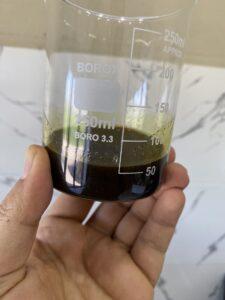How to make Aleppo soap
Creating traditional Aleppo soap with laurel berry oil is an art that has been passed down through generations in the city of Aleppo. Here’s a simplified explanation of the process, based on traditional methods:
Ingredients:
- Olive Oil: The base oil that forms the majority of the soap.
- Laurel Berry Oil: The signature ingredient that differentiates Aleppo soap and adds its unique properties.
- Lye (Sodium Hydroxide): A necessary reactant for saponification.
- Water: Used to dissolve the lye and facilitate the soap-making process.
Steps to Make Traditional Aleppo Soap:
- Preparation of Lye Solution: Start by dissolving lye in water to create a lye solution. This process is critical and should be handled with care to ensure safety.
- Mixing Oils: Heat the olive oil in a large vat and gradually add the lye solution. This mixture is then cooked, often for several days, to saponify the fats, turning them into soap.
- Adding Laurel Berry Oil: Once the saponification is nearing completion, laurel berry oil is added to the mixture. The amount of laurel berry oil can vary from 2% to 20%, affecting the quality and characteristics of the final product.
- Molding and Cutting: After thorough mixing, the soap is poured onto a flat surface to cool and solidify. It’s traditionally spread out on the floor, often covered with wax paper.
- Curing: Once solidified, the soap is cut into individual bars and stamped with the maker’s seal. These bars are then stacked in a way that allows air to circulate around them, facilitating drying and hardening.
- Aging: Aleppo soap is known for its long aging process. The bars are stored for at least six months to several years. During this time, the soap’s color changes from green to a golden outer surface with a greenish interior, and its pH levels reduce, making it milder.
Properties and Benefits:
Aleppo soap is highly valued for its moisturizing properties due to the olive oil, and its laurel oil content offers antiseptic, anti-itch, and anti-inflammatory benefits. It is gentle enough for sensitive skin and can be used for washing both skin and hair.
Note:
Making traditional Aleppo soap requires precise techniques and careful handling, especially when working with lye. It’s recommended to gain practical experience or seek guidance from an expert soap maker before attempting this process at home.
This method preserves an ancient tradition and results in a product that is both luxurious and beneficial for the skin. If you’re interested in more detailed guidance or historical background, consider looking for resources that specialize in traditional soap-making techniques.
Keywords: Laurel berry oil, laurel fruit oil, bay laurel essential oil


